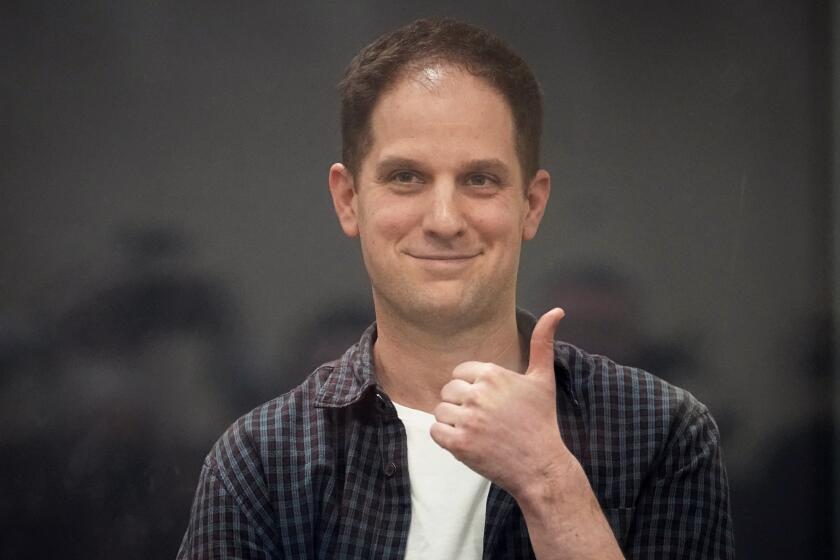Nations Address Gang Violence
Increasingly aware that tougher law enforcement alone can’t solve problems caused by international street gangs, officials from across the hemisphere met here Friday to discuss causes of gang violence and ways to prevent it.
Meanwhile in Tapachula, in Chiapas, Mexico’s southernmost state, delegates from 10 countries wrapped up a separate two-day conference on police and intelligence strategies to combat the groups. Chiapas is a stronghold of Mara Salvatrucha, one of the region’s largest and most violent gangs.
The simultaneous conferences reflected an intensifying focus on gangs. Officials are trying to craft cross-border solutions that combine law enforcement, economic development and crime prevention.
Central American gangs such as Mara Salvatrucha, or MS-13, and its rival, Mara 18, have become regional threats as members move from country to country, preying on migrants and killing, extorting and trafficking drugs and humans. The ranks of MS-13 alone are estimated to include as many as 50,000 members in six countries.
Cabinet ministers, social workers and many other officials from Central American and Caribbean countries as well as the U.S. and Mexico met in Panama at a conference sponsored by the Inter-American Development Bank. Foreign investors are fleeing El Salvador and Honduras, and emigration rates are rising because of gang violence. Some countries say gangs are responsible for homicide rates four times those of their neighbors.
Gang members typically come from broken families in marginalized neighborhoods, have dropped out of school and have little if any job prospects.
“Suddenly gangs are being talked about because it’s a systemic problem that is causing countries to be introspective,” said Gilberto Toro, a gang intervention project coordinator with the Panamanian government. “The problem isn’t gangs, it is society.”
Officials at the conference said Central American nations must offer youths an alternative to gangs.
Maria Gabriela Fernandez, a Costa Rican political scientist who studies gangs, is a technical advisor to a $22-million program in San Pedro Sula, Honduras, a gang hotbed that has the fifth highest homicide rate among Latin American cities.
Her program, financed by the Inter-American Development Bank, combines job training, family and psychological counseling, police reforms and recreational options in an attempt to steer youths away from gangs, she said.
Guatamalan Education Ministry official Ruben Chaven Dufaul said providing better education in his country, where only 30% of all youths are still in school at age 14, is a daunting but essential element of attacking the gang problem.
“We are trying to approach it on the community level, establishing community cells to collaborate in education,” he said.
However difficult to deliver, education remains the single most effective way of keeping youths out of gangs, said Father Pepe Moratalla, who runs a vocational training program for 500 former gang members in San Salvador.
“If they are in school, it gives them a new identity, a new life and new values,” Moratalla said.
In Tapachula, participating countries said in a joint statement that they had agreed to develop a plan to share information, coordinate law enforcement and identify the most effective prevention and rehabilitation models.
“There are no easy solutions and no shortcuts,” said Steven Monblatt, a security expert with the Organization of American States, which sponsored the gathering. Transnational gangs “threaten political stability, inhibit social development and discourage foreign investment,” he said.
Robert Clifford, a member of the U.S. delegation to the Mexico meeting, who heads a nationwide FBI task force focusing on MS-13, said the conference reflected increased momentum. Governments are developing more channels of communication, a prerequisite for responding to the gang threat, he said.
“What’s encouraging here is all these countries are looking at this in a comprehensive manner. Law enforcement is part of it, but so is intervention and prevention,” Clifford said.
Among the ideas discussed in Tapachula were developing witness protection programs, coordinating simultaneous investigations of branches of the gangs that may be communicating, and designating “point persons” in each country for prosecution and prevention programs.
Kraul reported from Panama City, Connell from Tapachula, Mexico, and Lopez from Fort Worth, Texas.
More to Read
Start your day right
Sign up for Essential California for news, features and recommendations from the L.A. Times and beyond in your inbox six days a week.
You may occasionally receive promotional content from the Los Angeles Times.






